The Property of a Gentleman
Carlo Caliari, called CarlettoVenice 1567/70 - 1592/96The penitent Magdalene in a landscape
signed lower centre: CARLO CALIARI / VERONESE. Foil on canvas, in a Northumberland carved and gilt wood frameunframed: 126.4 x 97.7 cm.; 49¾x 38½ in.framed: 172.5 x 139 cm.; 67⅞ x 54¾ in.Condition reportThe canvas has been relined. The paint surface is secure and very clean. There are traces of good quality impasto, which are particularly visible in the foliage. The colours remain strong. Inspection under ultraviolet light reveals very small scattered retouchings throughout the flesh tones and the drapery. There are also very small scattered retouchings in the sky and a larger area of retouching in the foliage at the upper left. All these retouchings are very delicate and difficult to discern with the naked eye. The landscape and the tree are free of retouchings. Overall the work is in good condition. The work is offered in a gilt carved frame with a carved decoration of leaves and vines, in excellent condition.
Please note that Condition 12 of the Conditions of Business for Buyers (Online Only) is not applicable to this lot.
The lot is sold in the condition it is in at the time of sale. The condition report is provided to assist you with assessing the condition of the lot and is for guidance only. Any reference to condition in the condition report for the lot does not amount to a full description of condition. The images of the lot form part of the condition report for the lot. Certain images of the lot provided online may not accurately reflect the actual condition of the lot. In particular, the online images may represent colors and shades which are different to the lot's actual color and shades. The condition report for the lot may make reference to particular imperfections of the lot but you should note that the lot may have other faults not expressly referred to in the condition report for the lot or shown in the online images of the lot. The condition report may not refer to all faults, restoration, alteration or adaptation. The condition report is a statement of opinion only. For that reason, the condition report is not an alternative to taking your own professional advice regarding the condition of the lot. NOTWITHSTANDING THIS ONLINE CONDITION REPORT OR ANY DISCUSSIONS CONCERNING A LOT, ALL LOTS ARE OFFERED AND SOLD "AS IS" IN ACCORDANCE WITH THE CONDITIONS OF SALE/BUSINESS APPLICABLE TO THE RESPECTIVE SALE.ProvenanceCasa Lante, Rome, from which acquired by the brothers Pietro (1760–1833) and Vincenzo Camuccini (1771–1844), for their collection in Rome;
Sold by Vincenzo’s son, Giovanni Battista Camuccini, as part of a group of 74 pictures to Algernon Percy, 4th Duke of Northumberland (1792–1865), in 1853;
Thence by family descent at Alnwick Castle until sold by Hugh Algernon Percy (1914–1988), 10th Duke of Northumberland;
With Thomas Agnew & Sons Ltd., London;
From whom purchased by the father of the present owner in the 1950s;
Anonymous sale ('The Property of a Lady of Title'), London, Sotheby’s, 5 July 2006, lot 43;
Acquired shortly afterwards by the present collector.LiteratureT. Barberi, Catalogo ragionato della Galleria Camuccini in Roma descritto da Tito Barberi, unpublished MS catalogue of c. 1851, held in the Alnwick Castle Archives, listed under 'Camera Quarta', no. 1;
G. Waagen, Galleries and Cabinets of Art in Great Britain, London 1857, p. 469 (as Carlo Cagliari. The repentant Magdalen. Signed. From the Casa Lante. A good picture for him);
A. Graves, A Century of Loan Exhibitions 1813–1912, vol. V, second addenda and indexes, London 1915, p. 2226;
Helen, 8th Duchess of Northumberland, Catalogue of Pictures in the Collection of the Duke and Duchess of Northumberland, privately printed in 1930, no. 56, reproduced pl. 39, and also reproduced in a photograph taken by the Duchess (no. 15), as hanging in the Music Room at Alnwick Castle.ExhibitedNewcastle, 1887, no. 825 (lent by Algernon George Percy 6th Duke of Northumberland);
Sarasota, The John and Mable Ringling Museum of Art, Paolo Veronese A Master and His Workshop in Renaissance Venice, 7 December 2012 – 14 April 2013, p. 266, no. 69;
Verona, Palazzo della Gran Guardia, Paolo Veronese L'illusione della Realtà, 5 July – 5 October 2014, no. 6.16.Catalogue noteFollowing technical examination carried out prior to its inclusion in the exhibition Paolo Veronese A Master and His Workshop in Renaissance Venice, at the John and Mable Ringling Museum of Art, Sarasota in 2012, this Penitent Magdalene is now believed by scholars to be an early work by Carlo Caliari painted when the artist was around 18 years old, but retouched and improved by his father Paolo Veronese Indeed the most significant parts, notably the face and the drapery, appear to have been executed by a far superior hand than the underlying forms, and it seems likely that Paolo worked up his son's early works to help him establish a market for his paintings. The painting is datable circa 1588.
Carlo Caliari (called Carletto) was the most talented member of his father’s workshop. His paintings are stylistically similar to those of his father's but Carletto’s painting technique is less confident and arguably more delicate: the hair of the Magdalene and putti as well as the foliage and vegetation in the present work are fine examples of this. The painting has much in common with Veronese’s mature works and parallels can also be found in Carletto’s own œuvre: the saint’s upper body is extremely close to that of the Magdalene in Carletto’s altarpiece of The Virgin and Child in glory with Saints in the Uffizi, Florence.1 He used the figure again, in reverse, for his Hagar in the wilderness in the John and Mable Ringling Museum of Art, Sarasota, which was formerly ascribed to Veronese on the basis of a preparatory drawing attributed to him.2
This painting enjoys a highly distinguished provenance. It was amongst 74 pictures from the Camuccini collection in Rome, sold to Algernon Percy, 4th Duke of Northumberland, in 1853. The whole collection cost 125,000 Roman scudi, and included masterpieces by Raphael, Bellini, Guercino and Reni amongst others.3 The collection was formed by the two brothers Pietro and Vincenzo Camuccini both of whom were dealers, restorers and painters in their own right. From 1851 the pictures hung in the 16th-century Palazzo Cesi in Rome and Tito Barberi’s manuscript catalogue of the collection should be read as a visitor’s guided tour of the palazzo, listing the pictures in each room. The Carletto is mentioned as hanging in the 'Camera Quarta', no. 1, and Barberi notes a few biographical anecdotes along with a brief description of the painting.4 The provenance in the typed manuscript is given as 'Casa Sante' but it is probably a mis-transcription of Barberi’s original handwriting and should read 'Casa Lante', as noted by Waagen.
Algernon Percy, 4th Duke of Northumberland, enjoyed a successful career in the Navy, rising to the ranks of Commander and Admiral by the time he retired. He travelled extensively in Europe, Africa and the East, and it was after a trip to Italy that he decided to undertake the restoration of Alnwick Castle, with the help of the celebrated italian architect Commendatore Luigi Canina (director of the Musei Capitolini in Rome) and of Giovanni Mantiroli after Canina's death in 1856. Building work began in about 1854 and it was apparently 'in order to complete its character of an Italian Renaissance palace' that the Duke had negotiated the purchase of the Camuccini collection the previous year.5 The painting remained at Alnwick for the latter half of the 19th and into the 20th century, where it hung in the Music Room, as is proven by its presence in a photograph taken circa 1930 by Helen Magdalen, 8th Duchess of Northumberland (1886–1965), wife of Alan Ian Percy, 8th Duke of Northumberland (1880–1930).
1 L. Crosato Larcher, 'Per Carletto Caliari', Arte Veneta, vol. XXI, 1967, p. 113, reproduced fig. 126.2 P. Tomory, Catalogue of The Italian Paintings before 1800. The John & Mable Ringling Museum of Art, Sarasota 1976, pp. 82 and 84, no. 80, reproduced p. 83.3 Details of the transaction are listed in a letter from Emil Braun to the Duke on 19 September 1853, although the pictures did not arrive until 1856. The collection included: Raphael’s Madonna of the Pinks (National Gallery, London); Giovanni Bellini’s Feast of the Gods (National Gallery of Art, Washington); Guercino’s Esther before Ahasuereus (University of Michigan Museum of Art, Ann Arbor); and Reni’s Crucifixion (Alnwick Castle). See N. Penny, 'Raphael’s ‘Madonna dei Garofani’ rediscovered', in The Burlington Magazine, vol. CXXXIV, no. 1067, February 1992, pp. 76ff.4 'Carlo Caliari detto Carletto figlio a Paolo Veronese nacque nel 1570, morì nel 1596. La Maddalena. Sul sasso su cui sta inginocchiata la Santa leggesi Carlo Carliari Veronese F. Era di Casa Sante. Rari sono i dipinti di quest’artista, che nella corte sua vita in scarso numero ne condusse, sebbene quando rimase orfano all’età di 18 anni, fosse tale nell’arte, da poter compire alcuni lavori, dal padre lasciati imperfetti. Fini i brevi e laboriosi giorni consunto da soverchie fatighe.'5 Helen, 8th Duchess of Northumberland, see under Literature, p. 27.
The Property of a Gentleman
Carlo Caliari, called CarlettoVenice 1567/70 - 1592/96The penitent Magdalene in a landscape
signed lower centre: CARLO CALIARI / VERONESE. Foil on canvas, in a Northumberland carved and gilt wood frameunframed: 126.4 x 97.7 cm.; 49¾x 38½ in.framed: 172.5 x 139 cm.; 67⅞ x 54¾ in.Condition reportThe canvas has been relined. The paint surface is secure and very clean. There are traces of good quality impasto, which are particularly visible in the foliage. The colours remain strong. Inspection under ultraviolet light reveals very small scattered retouchings throughout the flesh tones and the drapery. There are also very small scattered retouchings in the sky and a larger area of retouching in the foliage at the upper left. All these retouchings are very delicate and difficult to discern with the naked eye. The landscape and the tree are free of retouchings. Overall the work is in good condition. The work is offered in a gilt carved frame with a carved decoration of leaves and vines, in excellent condition.
Please note that Condition 12 of the Conditions of Business for Buyers (Online Only) is not applicable to this lot.
The lot is sold in the condition it is in at the time of sale. The condition report is provided to assist you with assessing the condition of the lot and is for guidance only. Any reference to condition in the condition report for the lot does not amount to a full description of condition. The images of the lot form part of the condition report for the lot. Certain images of the lot provided online may not accurately reflect the actual condition of the lot. In particular, the online images may represent colors and shades which are different to the lot's actual color and shades. The condition report for the lot may make reference to particular imperfections of the lot but you should note that the lot may have other faults not expressly referred to in the condition report for the lot or shown in the online images of the lot. The condition report may not refer to all faults, restoration, alteration or adaptation. The condition report is a statement of opinion only. For that reason, the condition report is not an alternative to taking your own professional advice regarding the condition of the lot. NOTWITHSTANDING THIS ONLINE CONDITION REPORT OR ANY DISCUSSIONS CONCERNING A LOT, ALL LOTS ARE OFFERED AND SOLD "AS IS" IN ACCORDANCE WITH THE CONDITIONS OF SALE/BUSINESS APPLICABLE TO THE RESPECTIVE SALE.ProvenanceCasa Lante, Rome, from which acquired by the brothers Pietro (1760–1833) and Vincenzo Camuccini (1771–1844), for their collection in Rome;
Sold by Vincenzo’s son, Giovanni Battista Camuccini, as part of a group of 74 pictures to Algernon Percy, 4th Duke of Northumberland (1792–1865), in 1853;
Thence by family descent at Alnwick Castle until sold by Hugh Algernon Percy (1914–1988), 10th Duke of Northumberland;
With Thomas Agnew & Sons Ltd., London;
From whom purchased by the father of the present owner in the 1950s;
Anonymous sale ('The Property of a Lady of Title'), London, Sotheby’s, 5 July 2006, lot 43;
Acquired shortly afterwards by the present collector.LiteratureT. Barberi, Catalogo ragionato della Galleria Camuccini in Roma descritto da Tito Barberi, unpublished MS catalogue of c. 1851, held in the Alnwick Castle Archives, listed under 'Camera Quarta', no. 1;
G. Waagen, Galleries and Cabinets of Art in Great Britain, London 1857, p. 469 (as Carlo Cagliari. The repentant Magdalen. Signed. From the Casa Lante. A good picture for him);
A. Graves, A Century of Loan Exhibitions 1813–1912, vol. V, second addenda and indexes, London 1915, p. 2226;
Helen, 8th Duchess of Northumberland, Catalogue of Pictures in the Collection of the Duke and Duchess of Northumberland, privately printed in 1930, no. 56, reproduced pl. 39, and also reproduced in a photograph taken by the Duchess (no. 15), as hanging in the Music Room at Alnwick Castle.ExhibitedNewcastle, 1887, no. 825 (lent by Algernon George Percy 6th Duke of Northumberland);
Sarasota, The John and Mable Ringling Museum of Art, Paolo Veronese A Master and His Workshop in Renaissance Venice, 7 December 2012 – 14 April 2013, p. 266, no. 69;
Verona, Palazzo della Gran Guardia, Paolo Veronese L'illusione della Realtà, 5 July – 5 October 2014, no. 6.16.Catalogue noteFollowing technical examination carried out prior to its inclusion in the exhibition Paolo Veronese A Master and His Workshop in Renaissance Venice, at the John and Mable Ringling Museum of Art, Sarasota in 2012, this Penitent Magdalene is now believed by scholars to be an early work by Carlo Caliari painted when the artist was around 18 years old, but retouched and improved by his father Paolo Veronese Indeed the most significant parts, notably the face and the drapery, appear to have been executed by a far superior hand than the underlying forms, and it seems likely that Paolo worked up his son's early works to help him establish a market for his paintings. The painting is datable circa 1588.
Carlo Caliari (called Carletto) was the most talented member of his father’s workshop. His paintings are stylistically similar to those of his father's but Carletto’s painting technique is less confident and arguably more delicate: the hair of the Magdalene and putti as well as the foliage and vegetation in the present work are fine examples of this. The painting has much in common with Veronese’s mature works and parallels can also be found in Carletto’s own œuvre: the saint’s upper body is extremely close to that of the Magdalene in Carletto’s altarpiece of The Virgin and Child in glory with Saints in the Uffizi, Florence.1 He used the figure again, in reverse, for his Hagar in the wilderness in the John and Mable Ringling Museum of Art, Sarasota, which was formerly ascribed to Veronese on the basis of a preparatory drawing attributed to him.2
This painting enjoys a highly distinguished provenance. It was amongst 74 pictures from the Camuccini collection in Rome, sold to Algernon Percy, 4th Duke of Northumberland, in 1853. The whole collection cost 125,000 Roman scudi, and included masterpieces by Raphael, Bellini, Guercino and Reni amongst others.3 The collection was formed by the two brothers Pietro and Vincenzo Camuccini both of whom were dealers, restorers and painters in their own right. From 1851 the pictures hung in the 16th-century Palazzo Cesi in Rome and Tito Barberi’s manuscript catalogue of the collection should be read as a visitor’s guided tour of the palazzo, listing the pictures in each room. The Carletto is mentioned as hanging in the 'Camera Quarta', no. 1, and Barberi notes a few biographical anecdotes along with a brief description of the painting.4 The provenance in the typed manuscript is given as 'Casa Sante' but it is probably a mis-transcription of Barberi’s original handwriting and should read 'Casa Lante', as noted by Waagen.
Algernon Percy, 4th Duke of Northumberland, enjoyed a successful career in the Navy, rising to the ranks of Commander and Admiral by the time he retired. He travelled extensively in Europe, Africa and the East, and it was after a trip to Italy that he decided to undertake the restoration of Alnwick Castle, with the help of the celebrated italian architect Commendatore Luigi Canina (director of the Musei Capitolini in Rome) and of Giovanni Mantiroli after Canina's death in 1856. Building work began in about 1854 and it was apparently 'in order to complete its character of an Italian Renaissance palace' that the Duke had negotiated the purchase of the Camuccini collection the previous year.5 The painting remained at Alnwick for the latter half of the 19th and into the 20th century, where it hung in the Music Room, as is proven by its presence in a photograph taken circa 1930 by Helen Magdalen, 8th Duchess of Northumberland (1886–1965), wife of Alan Ian Percy, 8th Duke of Northumberland (1880–1930).
1 L. Crosato Larcher, 'Per Carletto Caliari', Arte Veneta, vol. XXI, 1967, p. 113, reproduced fig. 126.2 P. Tomory, Catalogue of The Italian Paintings before 1800. The John & Mable Ringling Museum of Art, Sarasota 1976, pp. 82 and 84, no. 80, reproduced p. 83.3 Details of the transaction are listed in a letter from Emil Braun to the Duke on 19 September 1853, although the pictures did not arrive until 1856. The collection included: Raphael’s Madonna of the Pinks (National Gallery, London); Giovanni Bellini’s Feast of the Gods (National Gallery of Art, Washington); Guercino’s Esther before Ahasuereus (University of Michigan Museum of Art, Ann Arbor); and Reni’s Crucifixion (Alnwick Castle). See N. Penny, 'Raphael’s ‘Madonna dei Garofani’ rediscovered', in The Burlington Magazine, vol. CXXXIV, no. 1067, February 1992, pp. 76ff.4 'Carlo Caliari detto Carletto figlio a Paolo Veronese nacque nel 1570, morì nel 1596. La Maddalena. Sul sasso su cui sta inginocchiata la Santa leggesi Carlo Carliari Veronese F. Era di Casa Sante. Rari sono i dipinti di quest’artista, che nella corte sua vita in scarso numero ne condusse, sebbene quando rimase orfano all’età di 18 anni, fosse tale nell’arte, da poter compire alcuni lavori, dal padre lasciati imperfetti. Fini i brevi e laboriosi giorni consunto da soverchie fatighe.'5 Helen, 8th Duchess of Northumberland, see under Literature, p. 27.





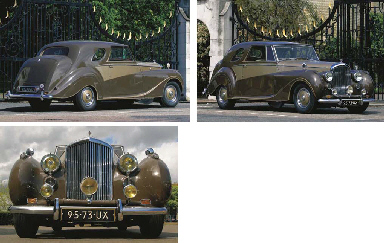
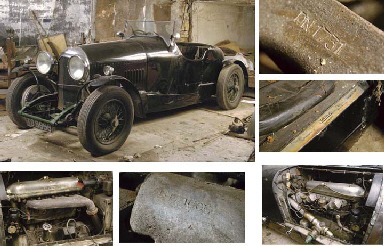
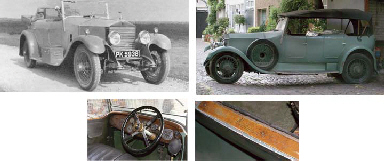

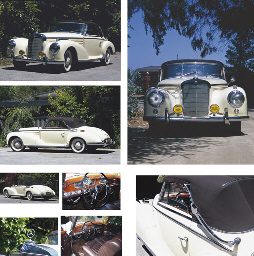
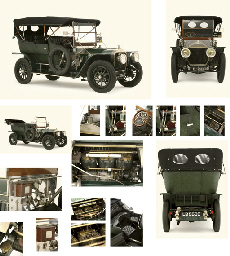
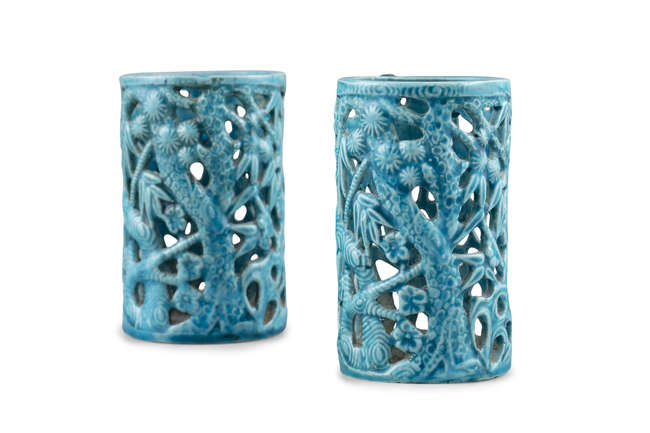



Testen Sie LotSearch und seine Premium-Features 7 Tage - ohne Kosten!
Lassen Sie sich automatisch über neue Objekte in kommenden Auktionen benachrichtigen.
Suchauftrag anlegen